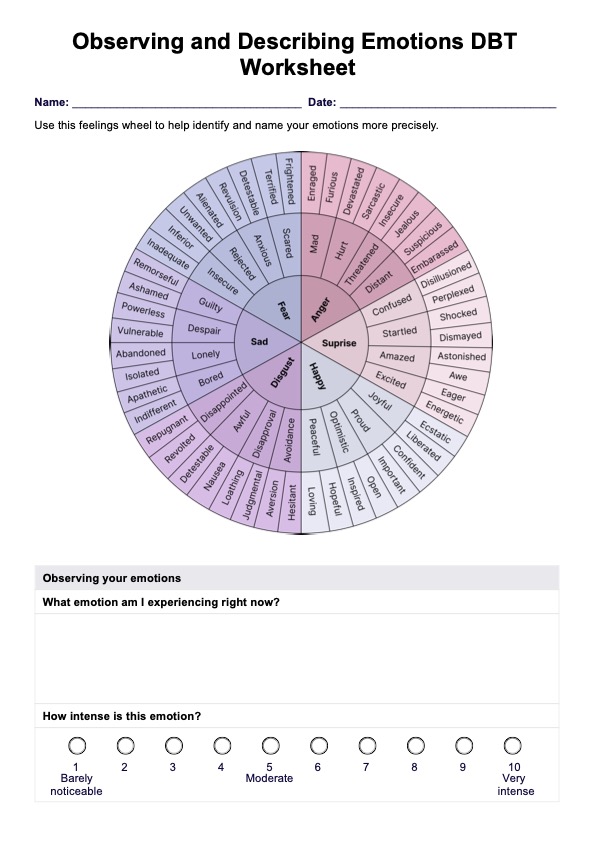The Observing and Describing Emotions DBT Worksheet is a guided tool derived from dialectical behavior therapy (DBT) designed to help individuals enhance their emotional awareness and regulation. It provides a structured format to observe, identify, and describe emotions, promoting self-insight and healthier coping strategies.

Observing and Describing Emotions DBT Worksheet
Help clients enhance emotional awareness to observe and describe their emotions effectively.
Observing and Describing Emotions DBT Worksheet Template
Commonly asked questions
You can use the Observing and Describing Emotions DBT Worksheet whenever you're experiencing intense emotions, facing challenging situations, or seeking to improve your emotional self-awareness. It's suitable for individual reflection, therapy sessions, crisis moments, or to enhance your emotional intelligence.
Follow the step-by-step instructions provided in the worksheet. Begin with mindful observation, identify your emotions, describe associated physical sensations and thoughts, practice non-judgment, and summarize your insights. Commit to applying healthy coping strategies based on your observations.
EHR and practice management software
Get started for free
*No credit card required
Free
$0/usd
Unlimited clients
Telehealth
1GB of storage
Client portal text
Automated billing and online payments











